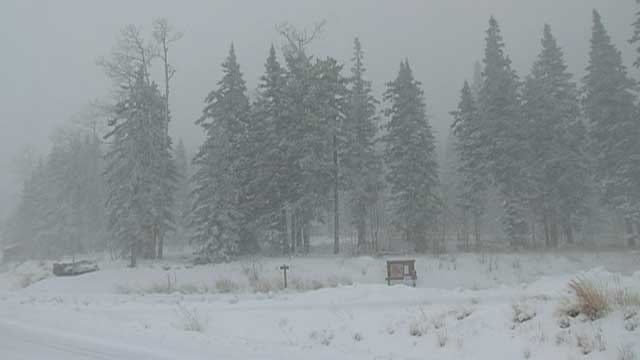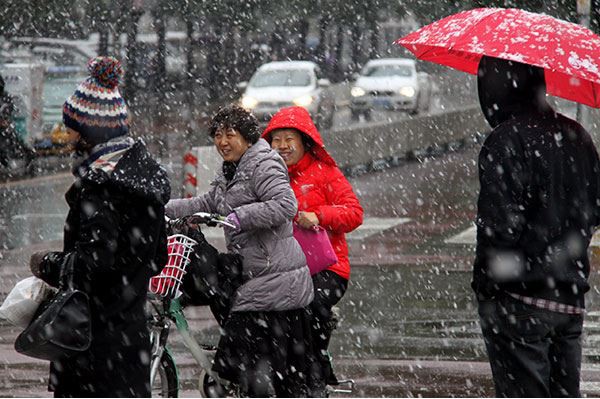
© KPHO
Record-setting snow in the high country on Wednesday has made the roads slick, according to the Arizona Department of Transportation.
ADOT is warning drivers to watch for icy roads in northern Arizona. There have been a few reports of vehicles going off the sides of roads.
The eastbound lanes of Interstate 40 in Williams were closed for a short time Thursday morning to remove ice from a bridge at milepost 162. ADOT officials said Interstate 17 just south of Flagstaff is clear of snow, but drivers should expect a slick road surface. Temperatures in Flagstaff were in the 20s Thursday morning and it's expected to be in the teens Friday morning.
An overnight freeze warning is in effect for elevations between 3,000 and 5,000 feet. Schools in the Flagstaff Unified School District were on a two-hour delay Thursday. Flagstaff received nearly
9 inches of snow on Wednesday and more than 2 feet of snow fell at Arizona Snowbowl. Another round of snow could come next week. Snowbowl hopes to open Nov. 20.
Motorists heading up to the area should be sure to have blankets, warm clothes and a full tank of gas.


Comment: While Australia does experience a "season of storms," what does stand out here however is the huge size of the hail stones involved and not just there but also increasingly across the globe. See the following selection of such reports for the last two years -
Another violent hailstorm hits the Altai region, Russia
40-min hailstorm leaves a trail of destruction in Mathura, India
Hailstorm with golf ball sized hail causes injuries in Germany
Large hailstones fall in Oman
What's up with the weather? Huge hail stones damage multiple commercial planes
Rome to Milan plane encounters violent hailstorm, destroys its nose cone and shatters cockpit window
Golf ball-sized hail hits Las Cruces, New Mexico
Large hailstones kill horses, birds and ravage cotton crops in northern New South Wales, Australia
Giant hailstones fall in Queensland, Australia
Hailstorm with golf ball sized hail causes injuries in Germany
Flash flood hits Menorca and egg-sized hailstones strike Aragon, Spain
Fist-sized hailstones cause injuries and damage cars in Naples, Italy
Large hail stones reported as thunderstorm hits Malta
Huge hailstones batter New South Wales coast, Australia
Giant hailstorms and heavy rain kill at least 16 people in China
Baseball-sized hail strikes Nebraska during storm
Huge hail pelts Paris as severe thunderstorms erupt in Western Europe
Germany hailstorm: Wassel hit by giant hailstones
Nine people killed as freak hailstorm rains massive boulders down on Indian villages